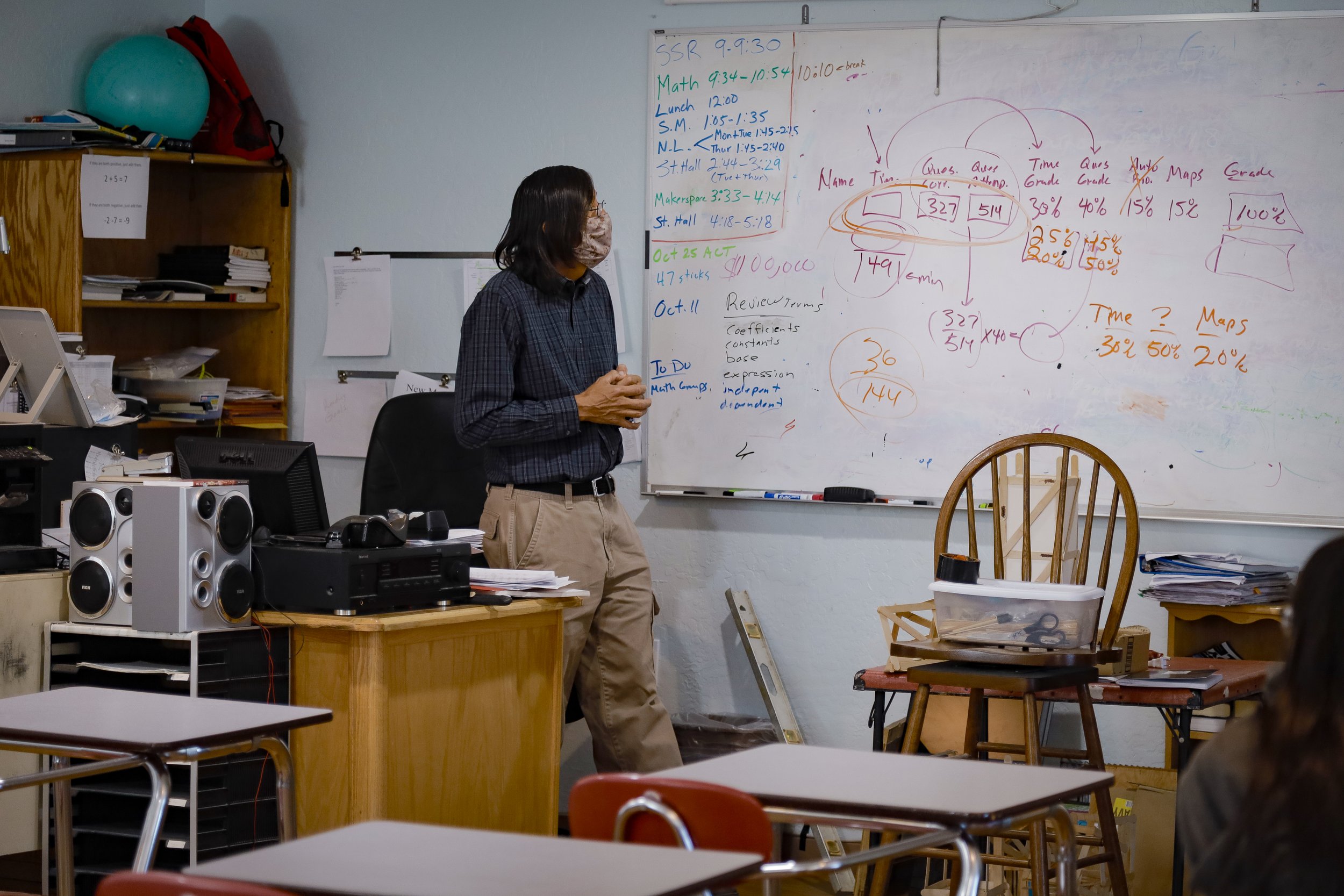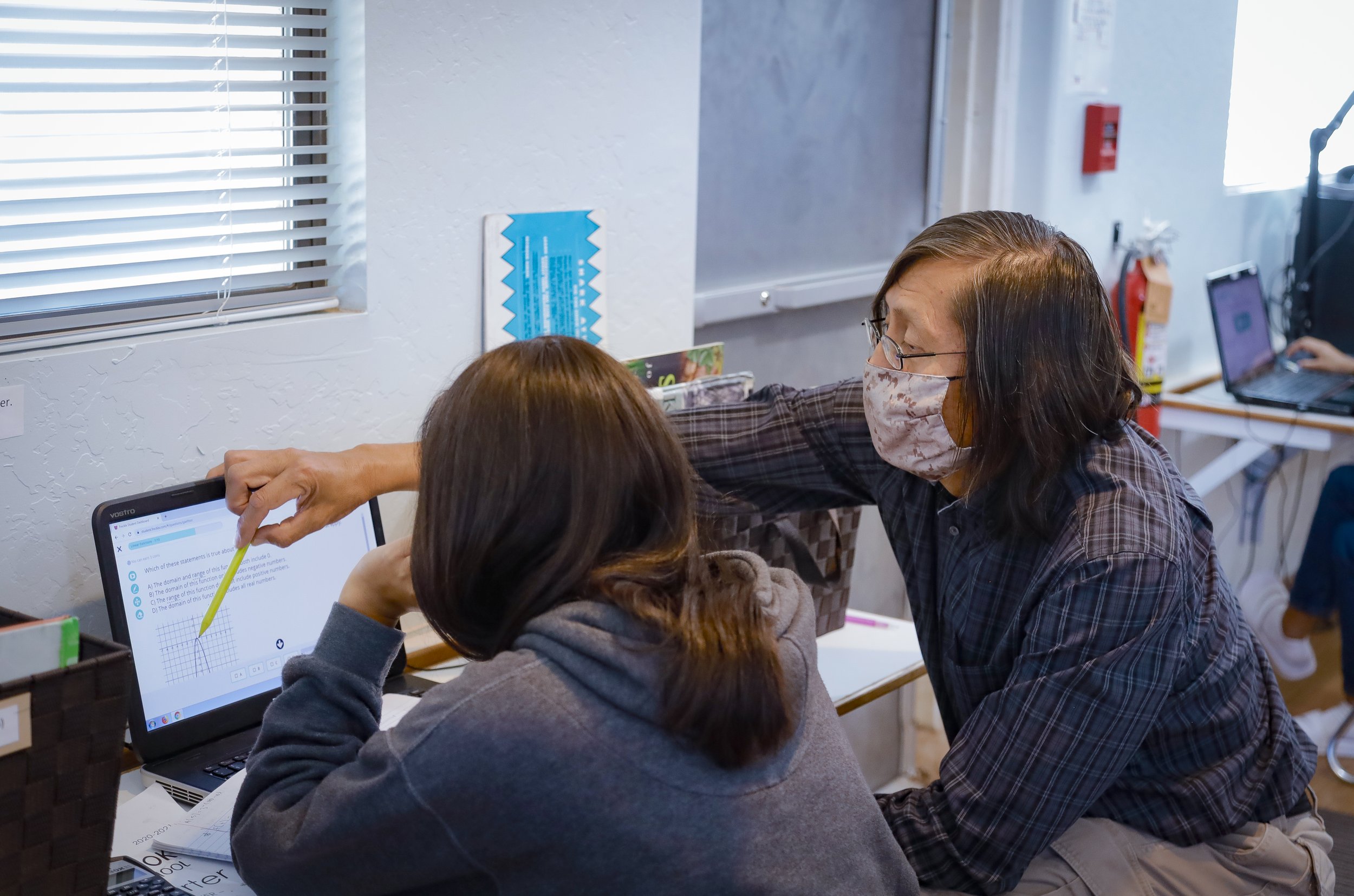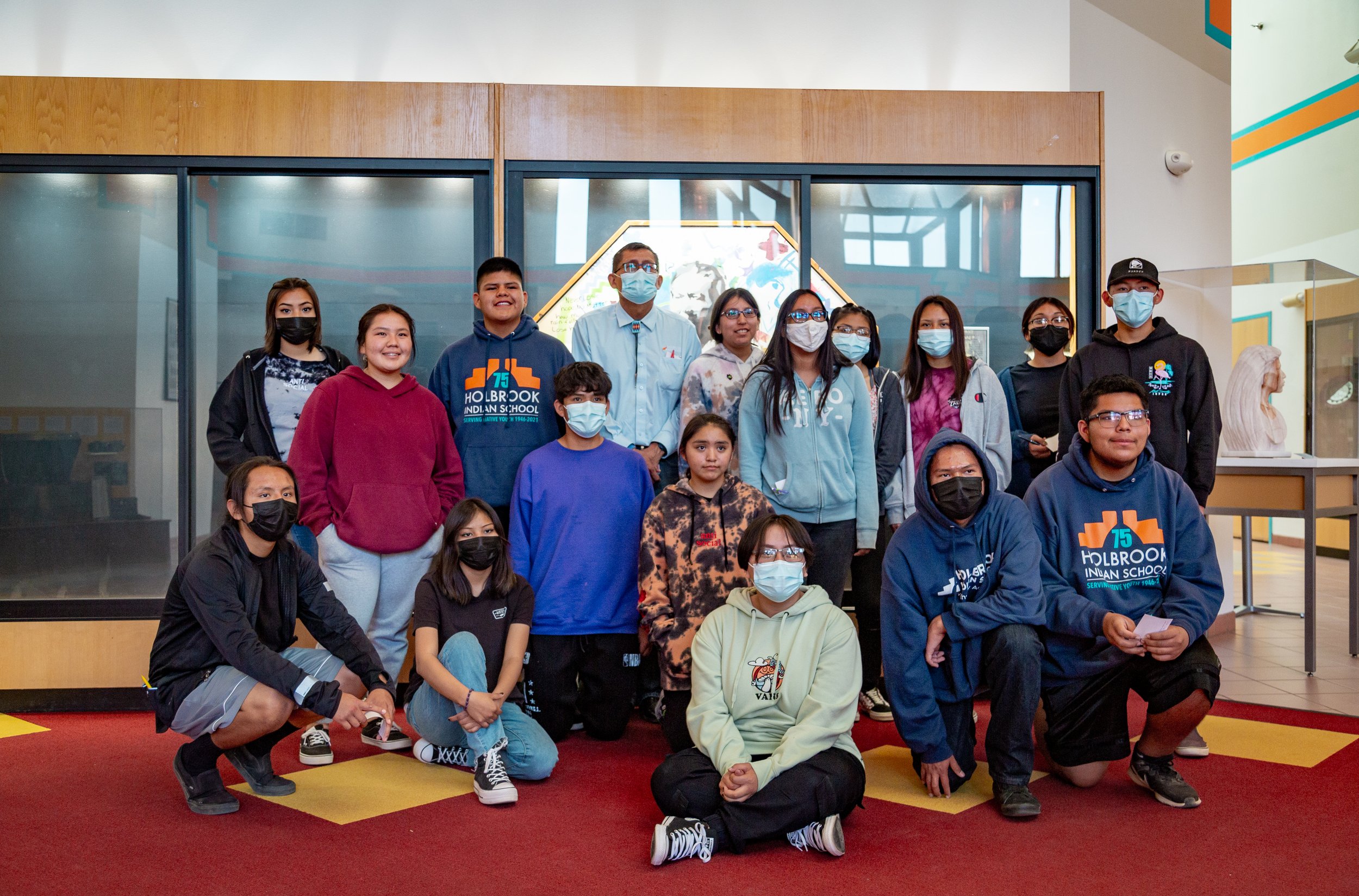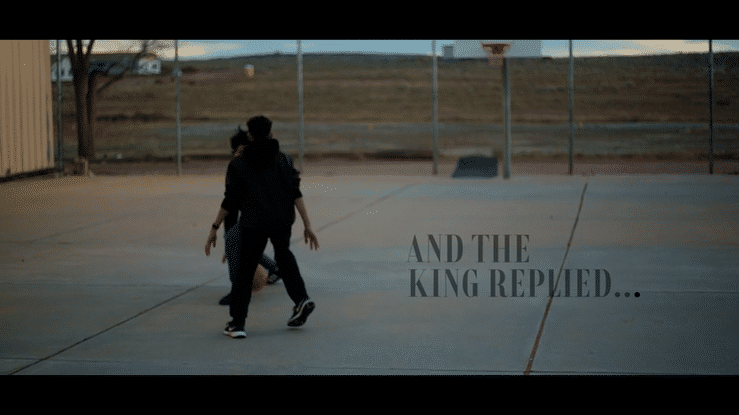HIS Nation - A Wonderful People
HIS Students visit Navajo capital, teacher Reflects on his Experience over the years.
Sam Hubbard
Our Navajo Government and Navajo Language classes provide our students with important connections to their Native culture and roots. The Navajo Language (Diné Bizaad), for example, is a dying language spoken by very few younger Navajo but is the only language that many older generations know how to speak fluently. Our classes help to provide a bridge in connecting students with their native tongue and hence their heritage and elders.
Mr. Sam Hubbard is a Navajo who works full-time at HIS to teach these classes to our students. Initially coming to HIS as a bible worker, then later as a bible teacher, Sam eventually became our Math teacher and now teaches Navajo language and Navajo Government.
Sam moved to Holbrook, Arizona in 2006 and has since been a beacon for the Navajo community on our campus. He is often helping many of our non-native staff connect and better relate to Navajos and other Indigenous Nations.
As one of the more seasoned staff members on campus, I sat down with Sam to ask him about his experience: how he came to learn about HIS, what led him to work here, and some insight into Navajo culture and government. The following is a transcript of that conversation.
A Stroll Down Memory Lane
What was your first exposure to HIS?
Sam:
In the 70s, a Navajo Code talker, Teddy Draper told my mom there was a School in Holbrook, and he told her “you should take your kids there.” That was the first time my mom heard about the school. So my mom sent my oldest brother Walter Hubbard and our four sisters to Holbrook.
My first exposure was in the fall of 2001 as a Bible worker. I did Bible work with the students and the community. I did a lot of Bible studies with the kids. They didn't have a dedicated pastor back then like we do now, so I also filled in as a preacher for the church.
So you came to HIS first as a Bible worker in 2001 for one year, then later as a teacher in 2006. Tell us about the time in between.
Sam:
Between 2001 and 2006, I did missionary work as a Bible worker in Gallup and south of Phoenix.
Before I came to HIS as a Bible worker, I was a party animal in my late teens. I was sick of it, and I wanted to stop drinking. I started going to AA meetings and seeing a counselor. One of the things suggested to me by my counselor was prayer. I prayed, and I've been sober ever since. From that time, I felt like I needed to find a church. I started looking and found a prophecy seminar in Albuquerque, and a few months later, I became a Seventh-day Adventist.
After becoming Adventist, I felt inspired to tell people about it, and I quit my job and became a full-time missionary.
As a youth, did you ever think you would work at HIS?
Sam:
No, I never in my wildest dreams thought I would work at HIS. I didn't even think I would be a teacher. My dream was to be an engineer to design and build stuff.
Mr. Hubbard helping a student with a math problem.
Mr. Hubbard leads out in a model campus project with students in maker space class.
So initially you got your degree in engineering and later got your certification to teach. You are now working at HIS in multiple roles. Tell us about all that you do here.
Sam:
When I first came, I was the boys' dean. At the same time, I was a Bible teacher for 9th grade. Then when the Math teacher moved on to another job, I applied for that position and got it. At the same time, I was asked to teach Navajo government.
Maker space came along later. Maker space is just a version of STEAM/STEM teaching students to develop something that is needed and to design and build it (on a really small scale of course because they’re junior high kids.)
This year my students made a boat out of concrete cement. I like it because its purpose is to make something that seems impossible possible. When we made some of the boats in one class, I thought some of their boats would sink because they made them very thick. I wasn't planning to test them out, but the students urged me to test them, and they floated. So my students made a believer out of me.
You recently had a special trip with your Navajo Language class. Where did you go, what was that about, and why is it important for our students to connect with their Native culture?
Sam:
Part of the Navajo language class is to learn about our culture and also to compare our culture to other tribes and languages. Normally we go to the Apache museum on the White Mountain Apache Reservation. But since their museum is closed because of COVID-19 restrictions, we decided to go to the Navajo museum on the Navajo reservation.
Some of the stuff the tour guide told our students about our culture, included significant stories from the past. He talked about the Codetalkers and the historical long walk. He also talked about the treaties between the United States and the Navajos.
HIS students at the Navajo Museum, Library and Visitors Center.
Nathaniel stands next to a photo of his grandfather (left) at the Navajo Museum. His grandfather was a Navajo Code Talker.
“One funny thing I found was when the tour guide asked how many of you eat bacon?
Nobody raised their hand. He had to ask again because he was shocked.”
One funny thing I found was when the tour guide asked, “How many of you eat bacon?” Nobody raised their hand. He had to ask again because he was shocked. The significance of that was in the history of the long walk when Navajos were forced to leave their land, they were given food that they were not used to such as bacon. Traditionally and historically bacon was not a Navajo food. Today we are meat-a-holics, but what I understand from my mom was that traditionally most of what we ate was from farming. To have meat you had to go hunt it, which made it a rare or special occasion.
So I guess our health classes are working.
Some of the Navajo spiritual beliefs are not that far from the Bible. For example the creation narrative and flood stories.
I think it’s important for the student to try and connect with their past, to pick and choose the important things. There’s no way we can go back to a completely traditional way of life, but there are still many good things that they can use today.
HIS students making fry bread.
After the museum visit, you made fry bread with the students. Tell us about the origins/culture behind fry bread and how it is made.
Sam:
I think it goes back to the long walk in 1864-1868. The government gave us flour, and we had to do something with it. I don't think we made bread before that.
I always tell my students we are always creating new traditions and fry bread is part of that. The Navajo fry bread is a little more fluffy than other tribes. It’s essentially a wheat meal mix made into a flattened, round bread and fried. This is eaten with meat and potatoes or sometimes with just honey as a sweet snack.
HIS students visit the Navajo Nation capital in Window Rock as part of their Navajo Government class. They learn first-hand about how its three-branch system of government operates? Tell us a little about that.
Sam:
The Navajo Nation has four sessions throughout the year where they pass laws. They do that in the Nation’s capital Window Rock. We usually go there and watch them do their speeches. And to see the procedure.
Window Rock is the name of the capital and the seat of government of the Navajo Nation. It gets its name from the unique rock formation where the government building is located.
Can you give us a little insight into the Navajo government as it is today and as it has been historically?
Sam:
One of the things I've taught in class is we have been to war with Spain, Mexico and the US, but Mexico and Spain did not defeat us. The United States finally defeated us in 1864 and forced us to relocate. Our ultimate destination was Oklahoma, moving from Arizona / New Mexico and that four corner states area. But in 1868 we signed a treaty with the US, and because of that treaty, we returned to our original area.
The main reason I bring that out to the students is to show that we are recognized as a nation. Treaties are only signed between nations, so I tell the students we are a nation within a nation.
I am sure there are other tribes like that, but I'm not familiar with them.
The Navajo Nation government is set up similarly to the US government. They have legislative, judicial, and executive branches. Within the Navajo Nation, there are 110 chapters that can be compared to something like a local city government. The difference in US city governments is they don't really have to consult the state for local laws and policies. They also have their own elections for city officials. In the Navajo Nation, local chapters answer to the Navajo government in order to make any laws as well as elect officials. It's a bit more communal.
Students from the Navajo language class at the Navajo Museum, Library and Visitor Center.
What are some memorable moments for you at HIS?
Sam:
My most memorable moment is when I became a math teacher. I applied to become a teacher, and I got the job. Another one is doing activities with the students outside of school or away from campus like Outdoor School, community service, and Sabbath afternoon outings.
Photos from the Navajo Museum visit
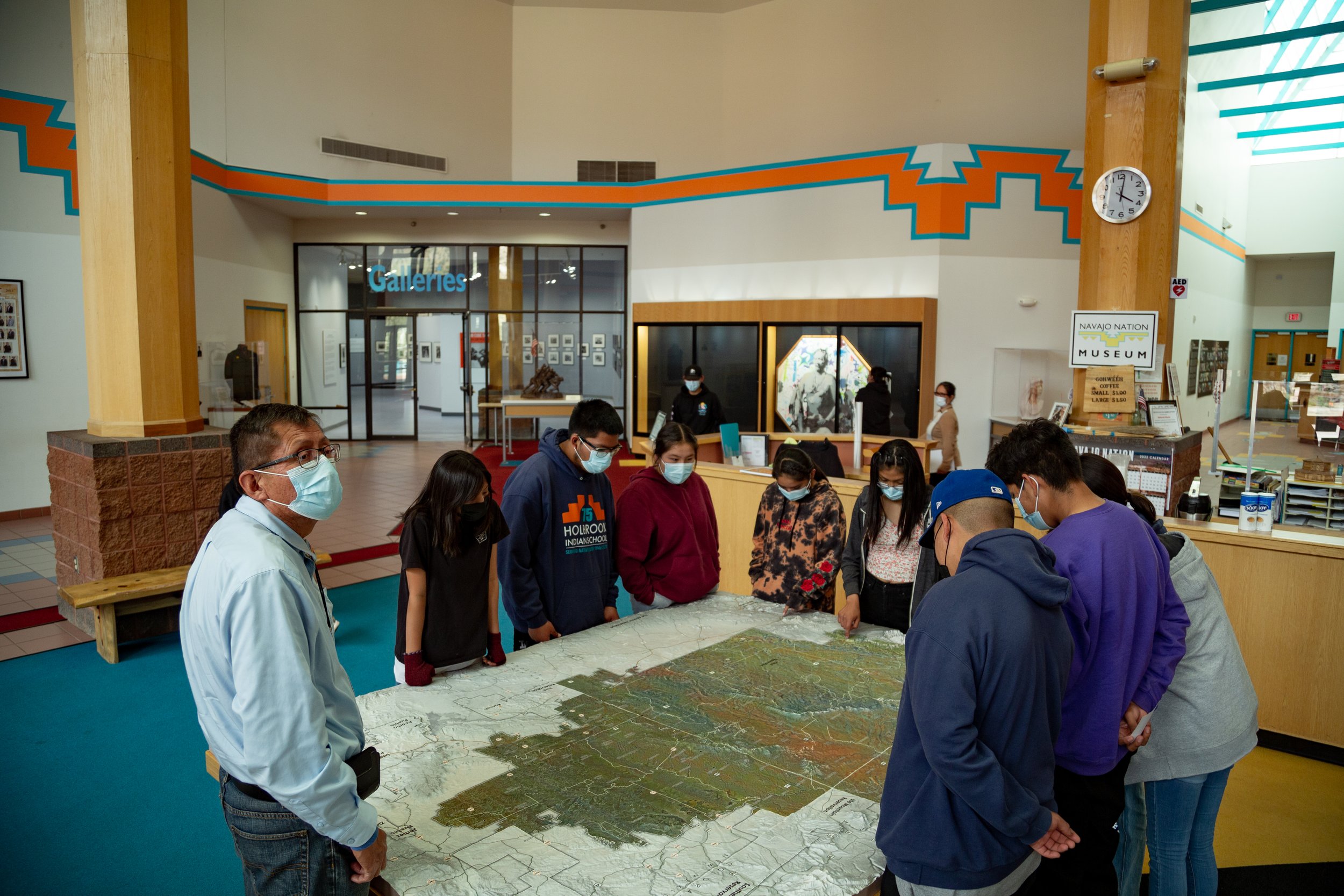
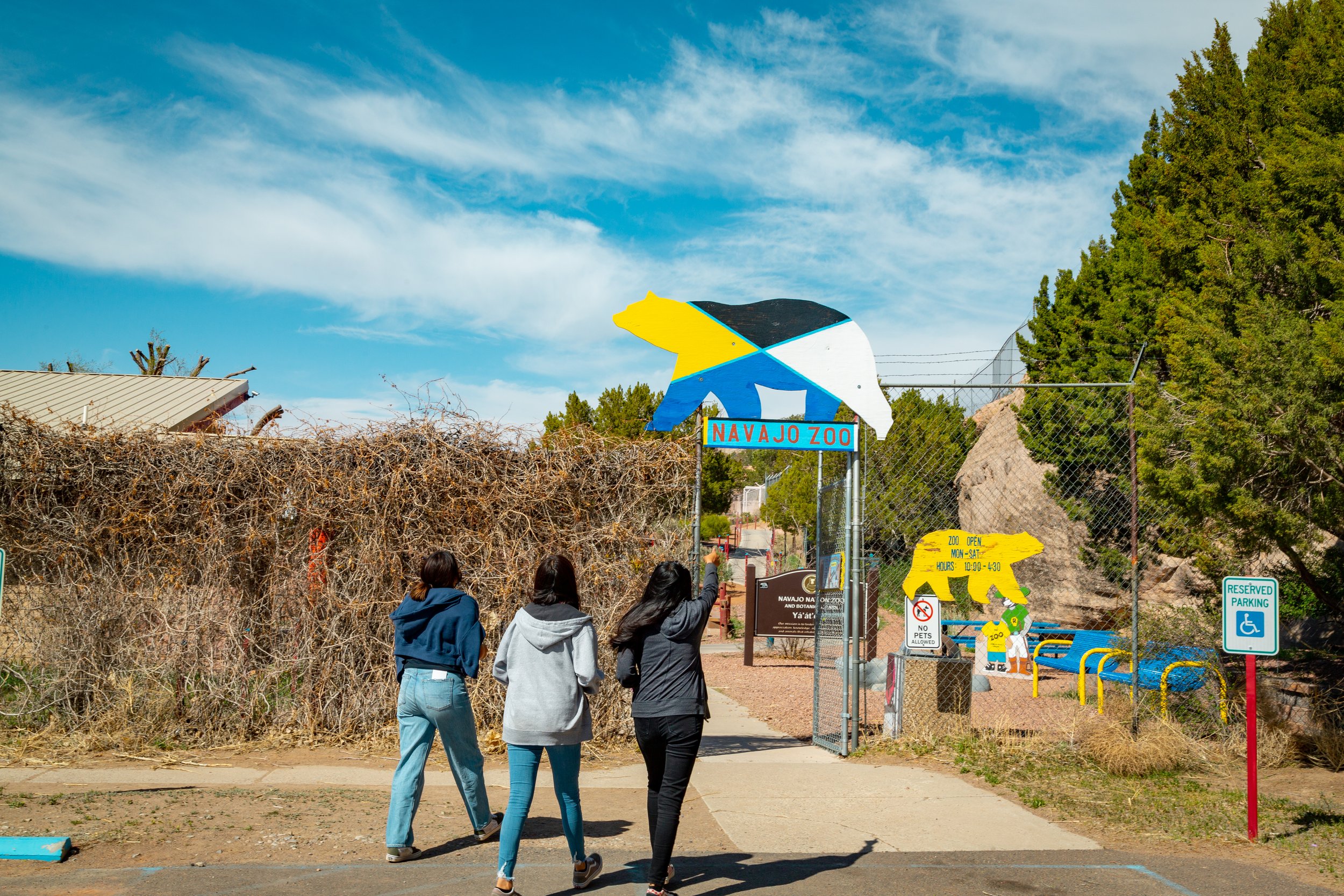
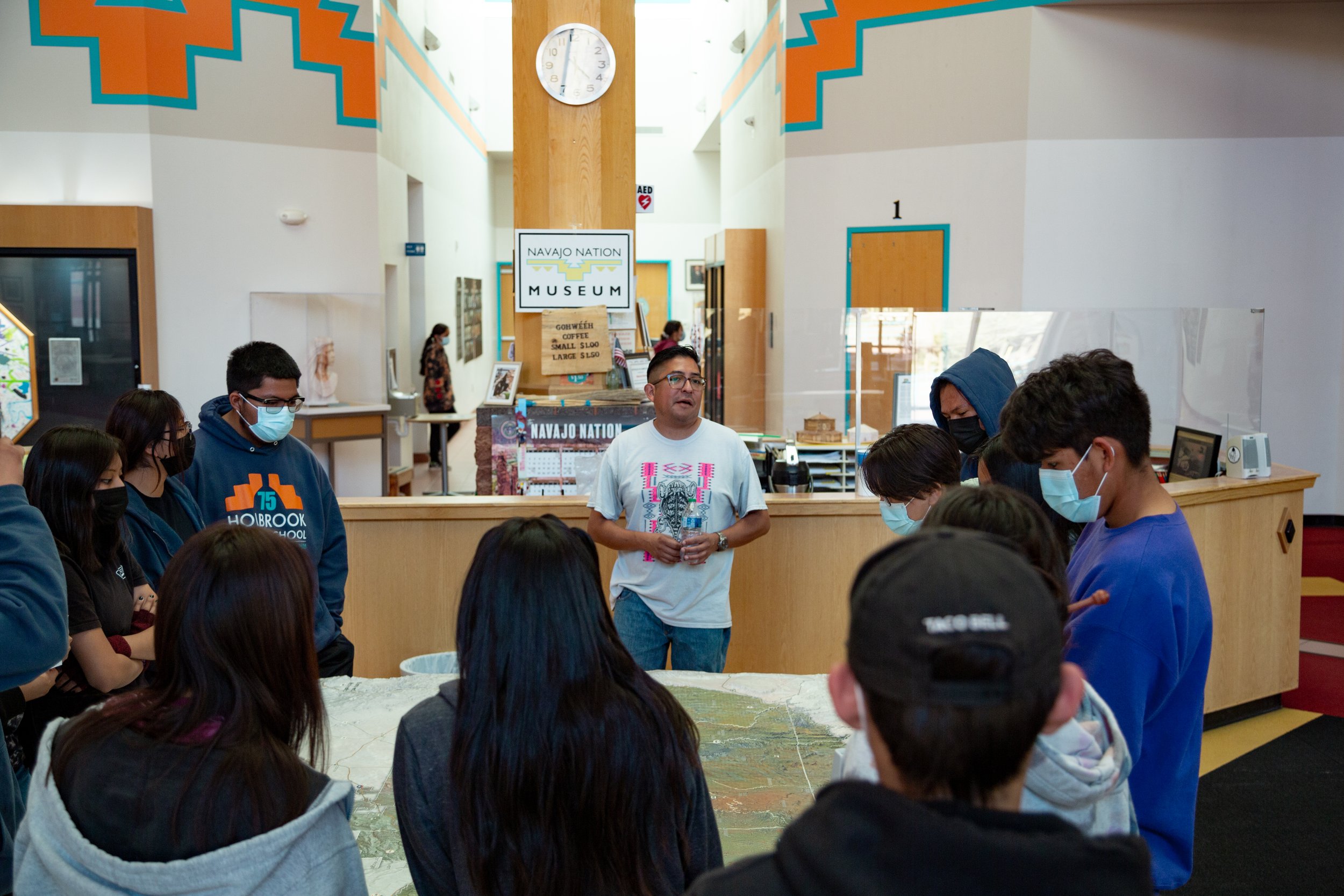
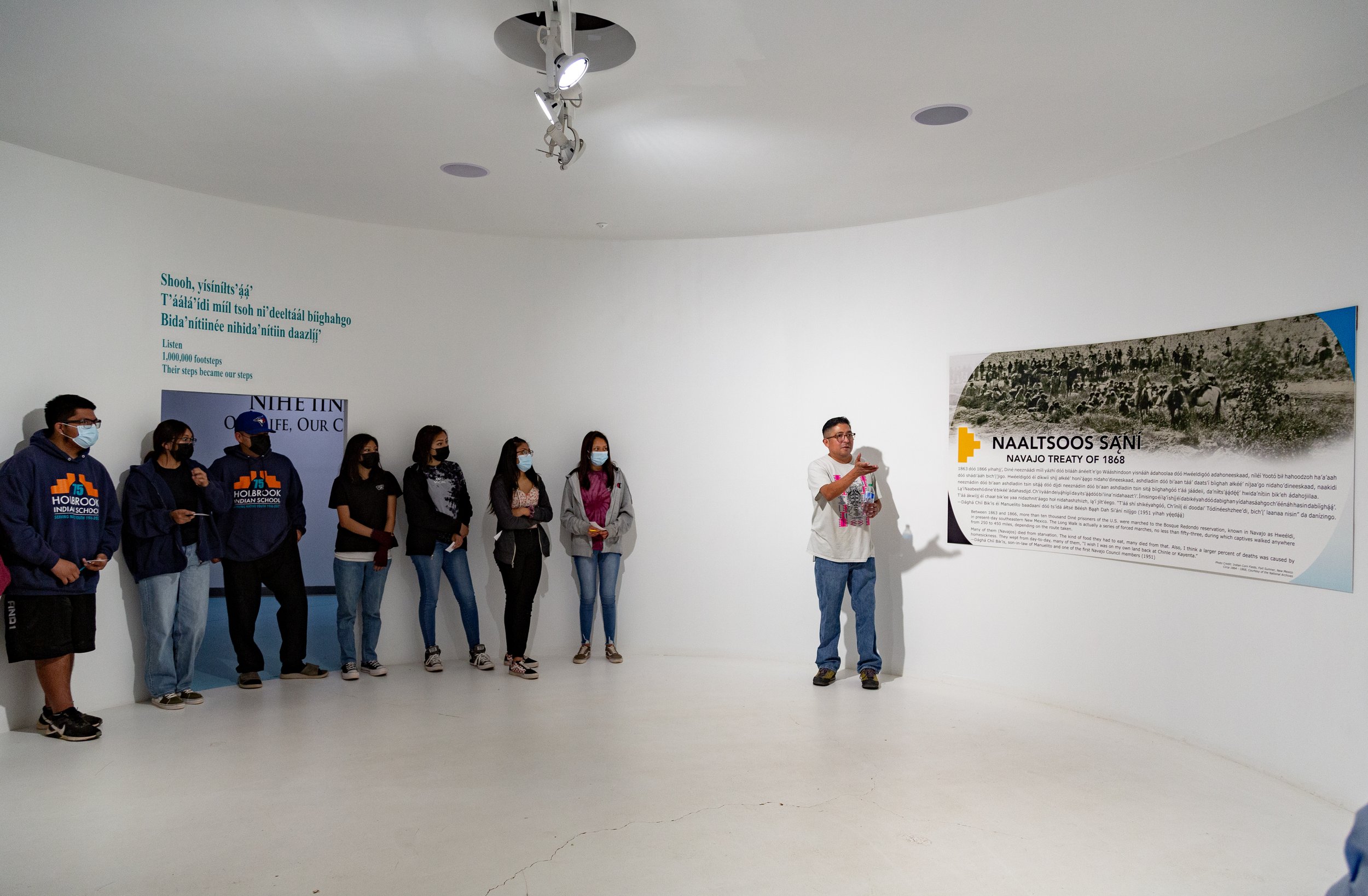
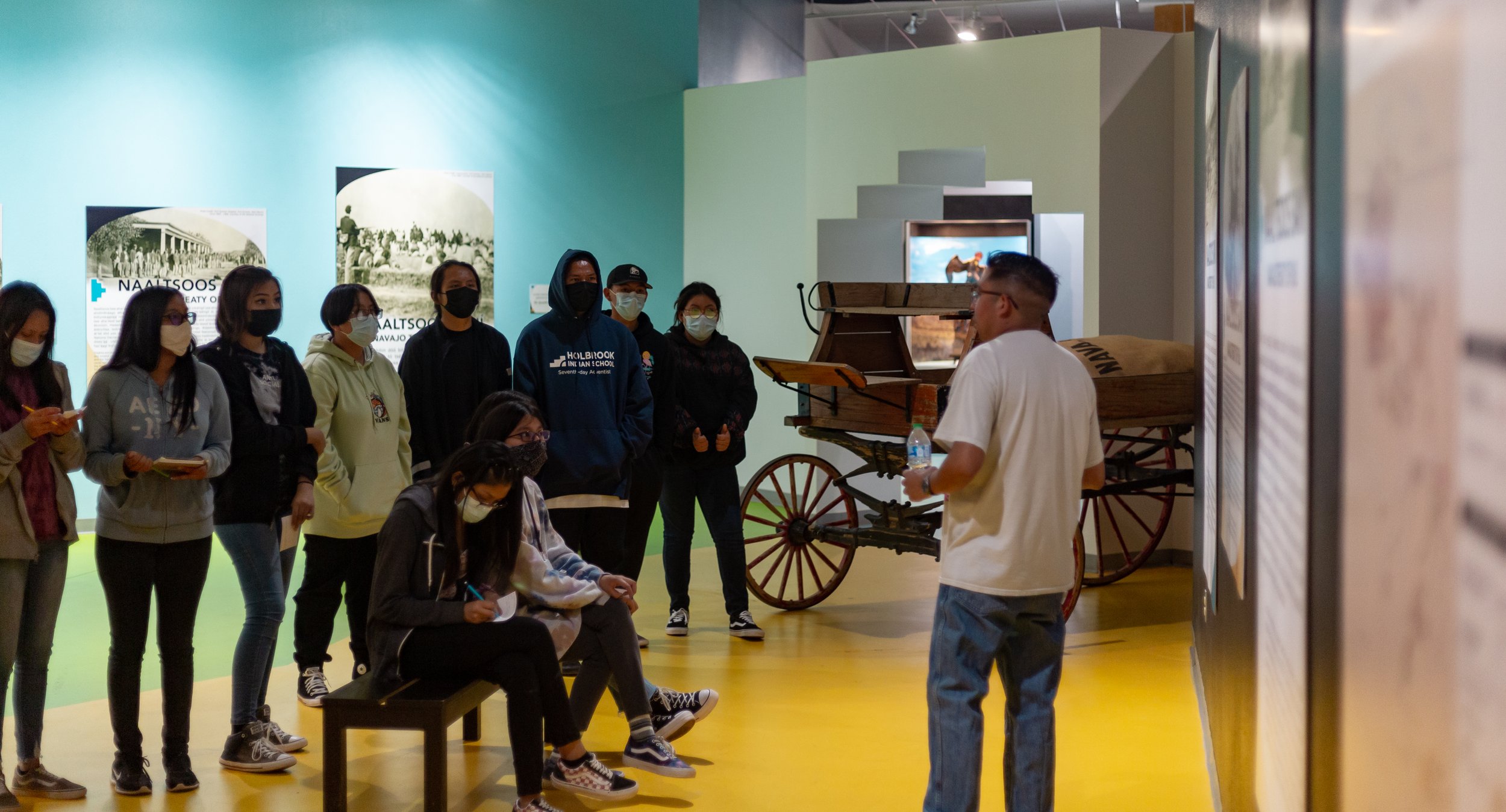
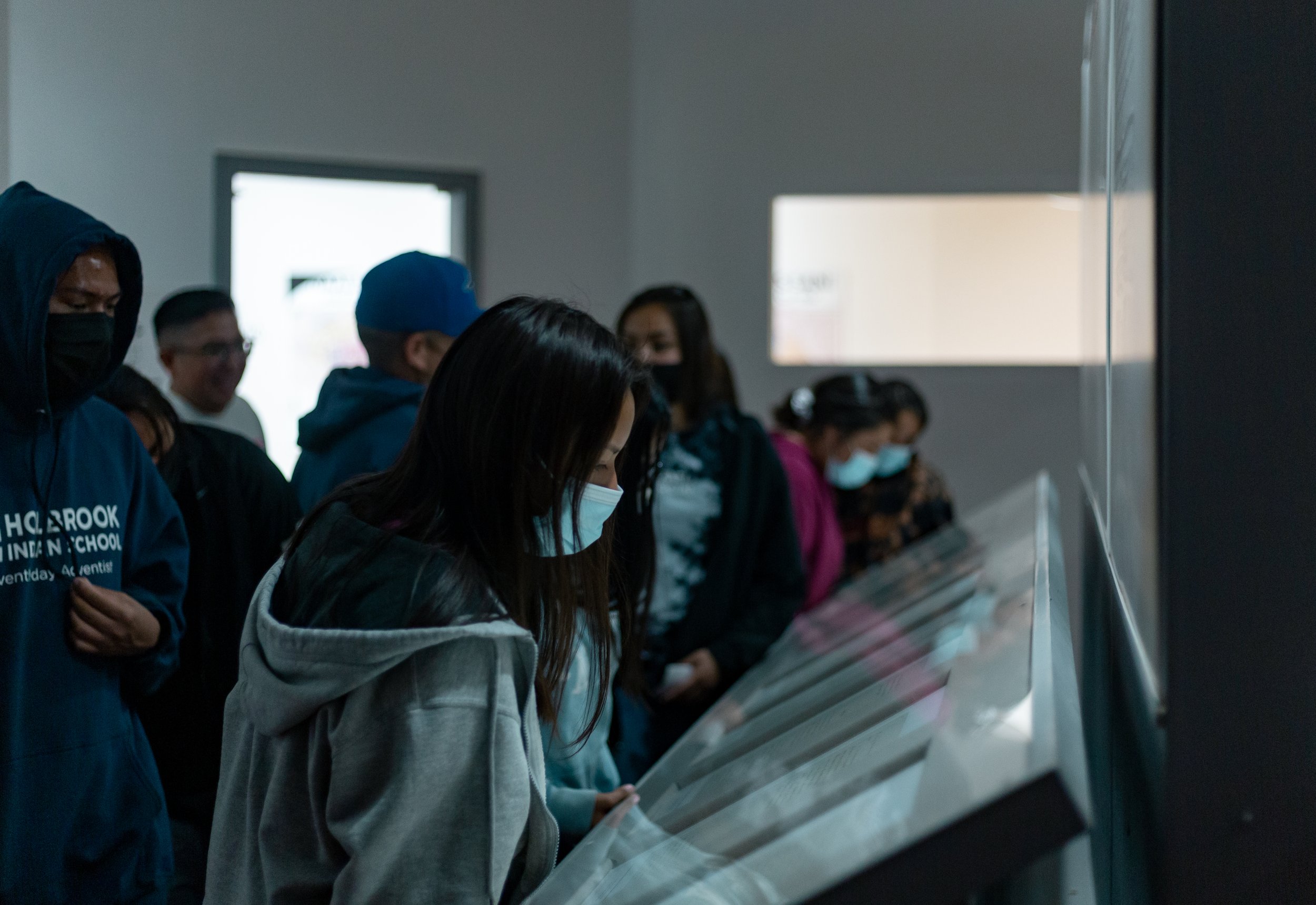

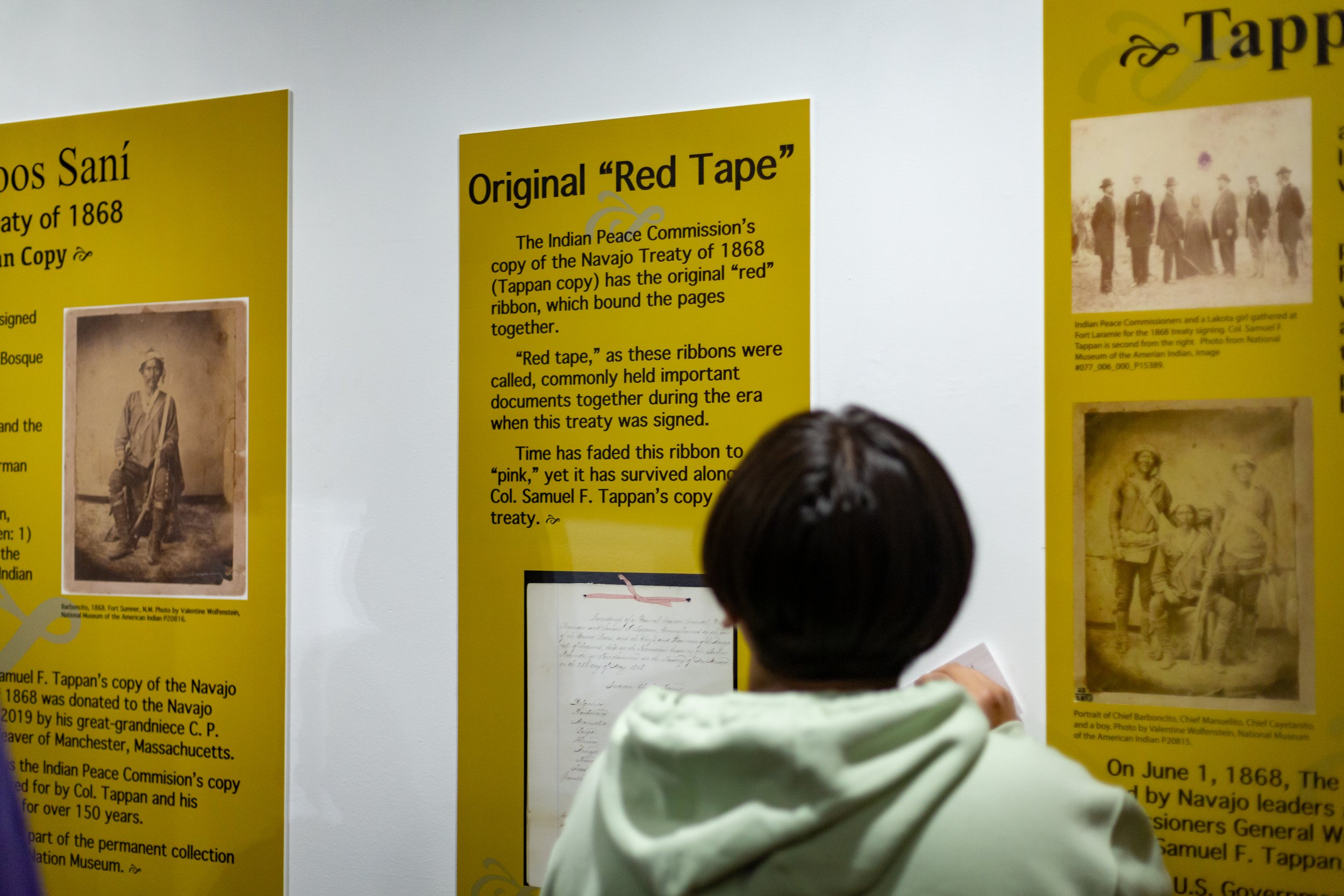
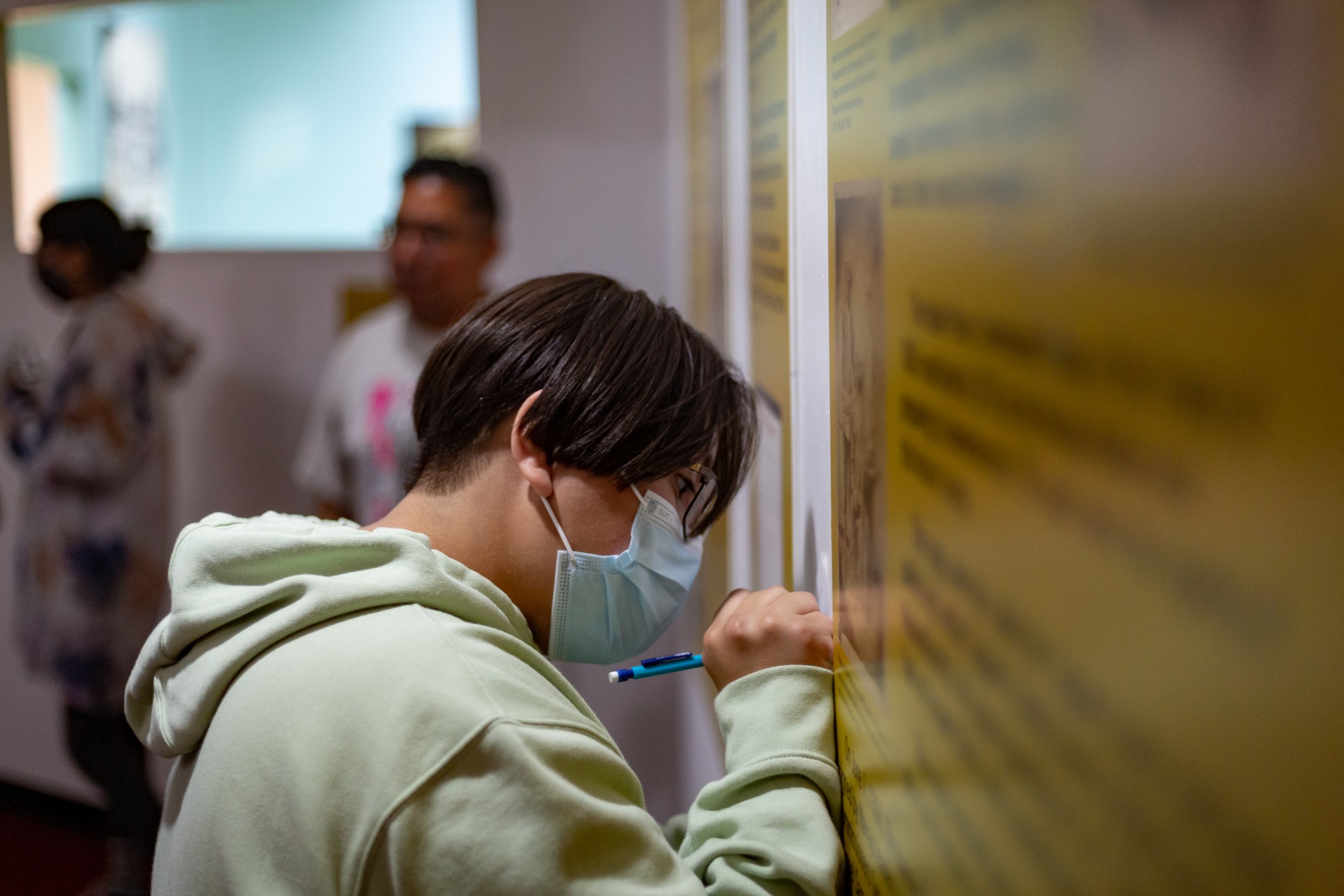
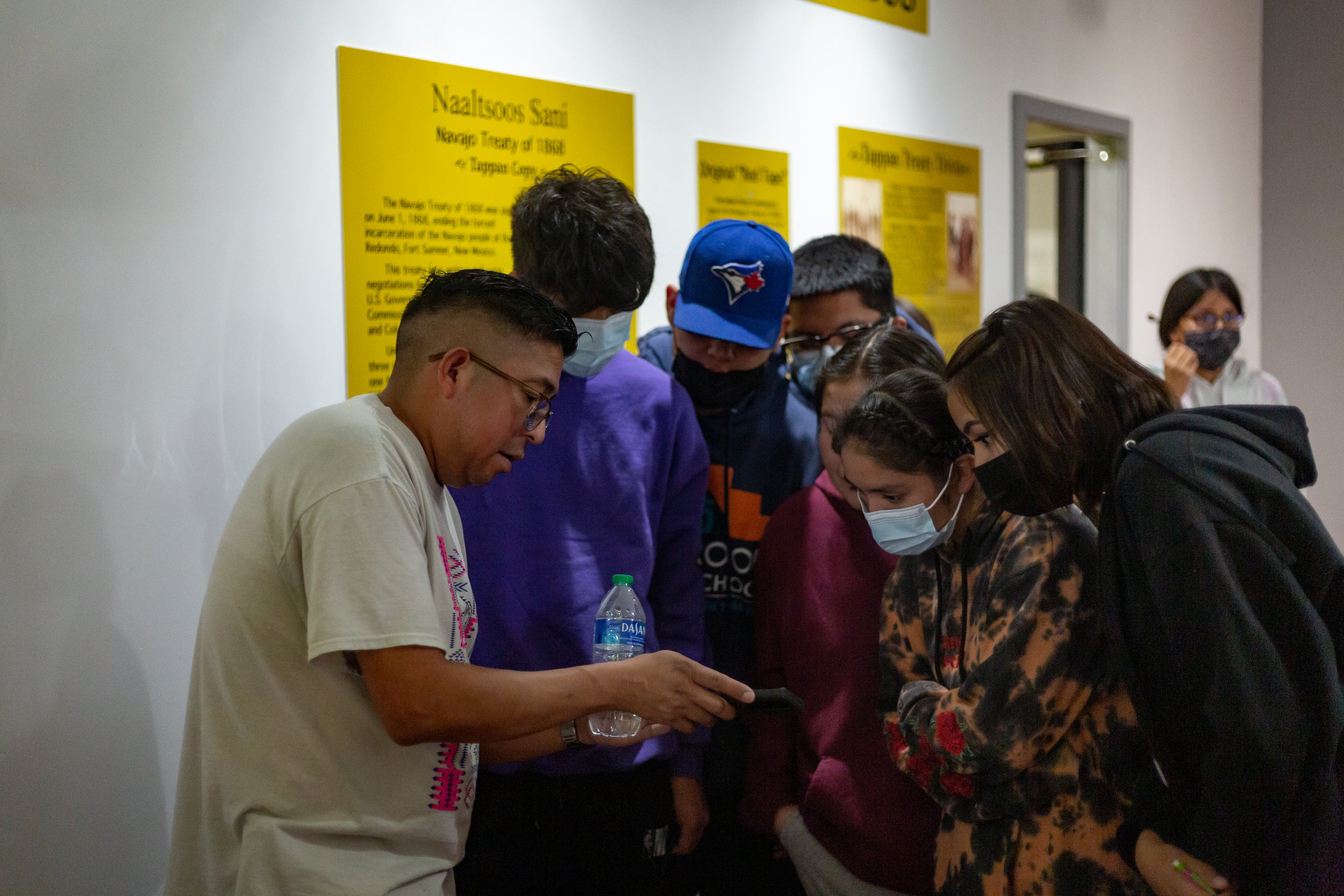
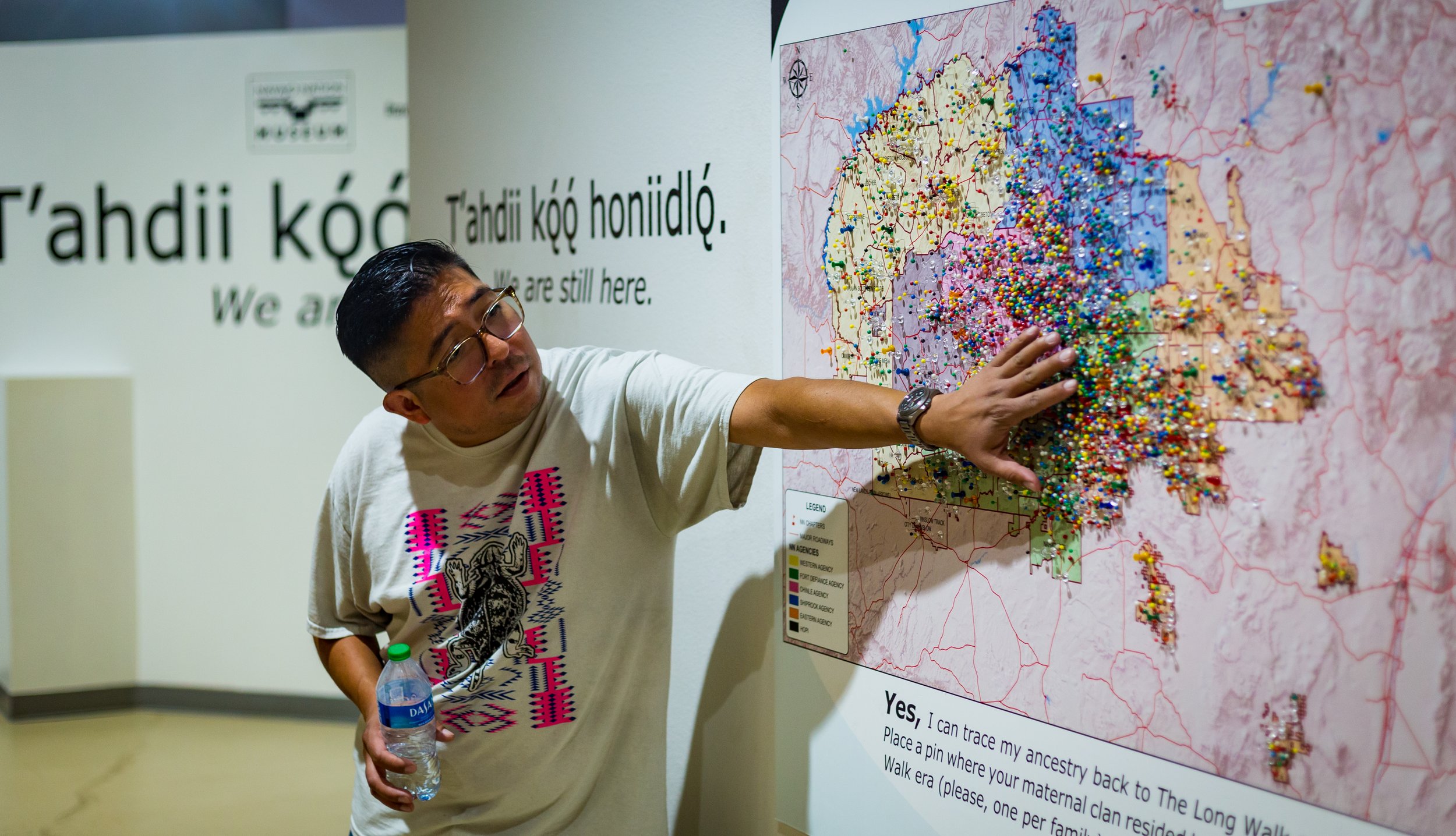
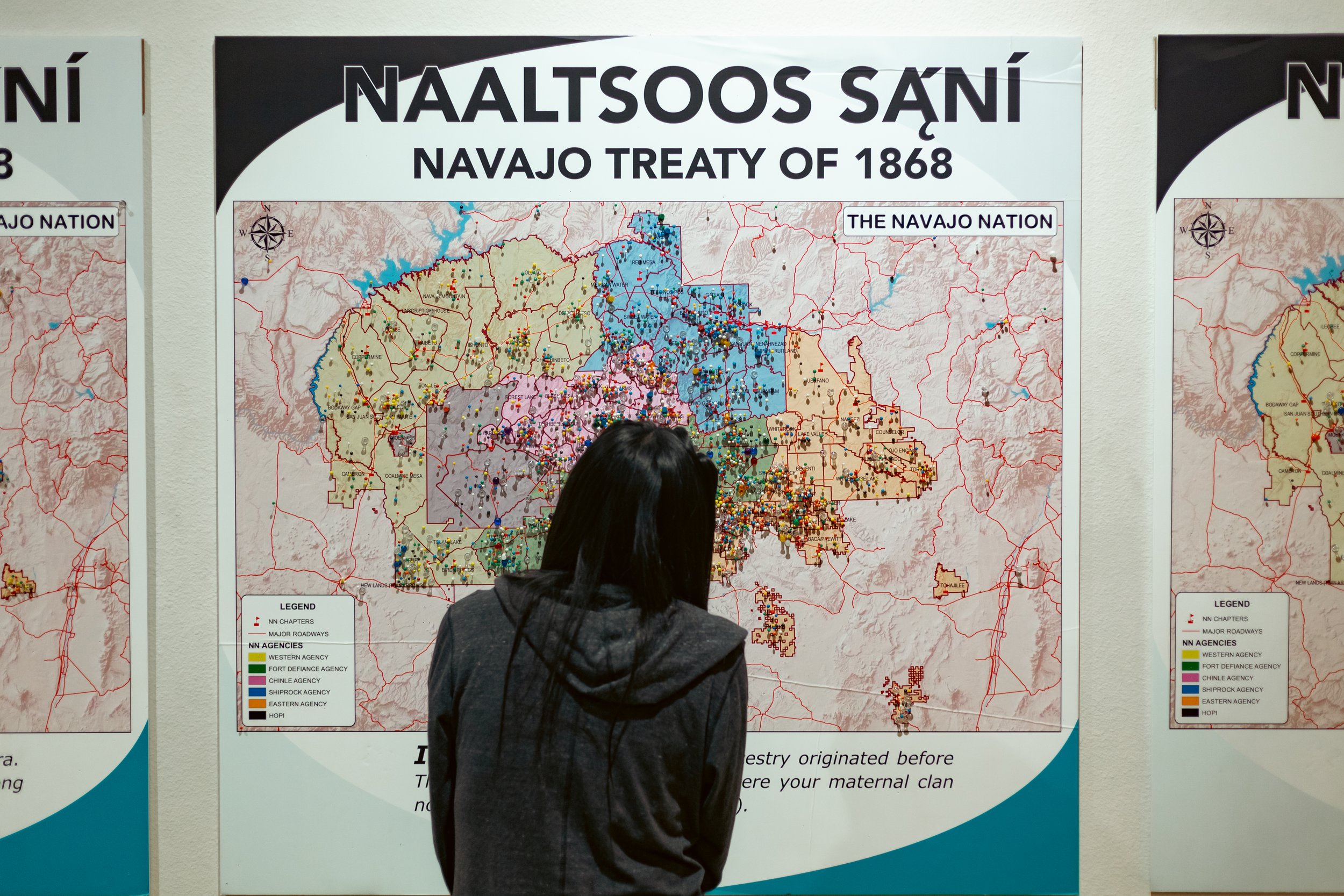
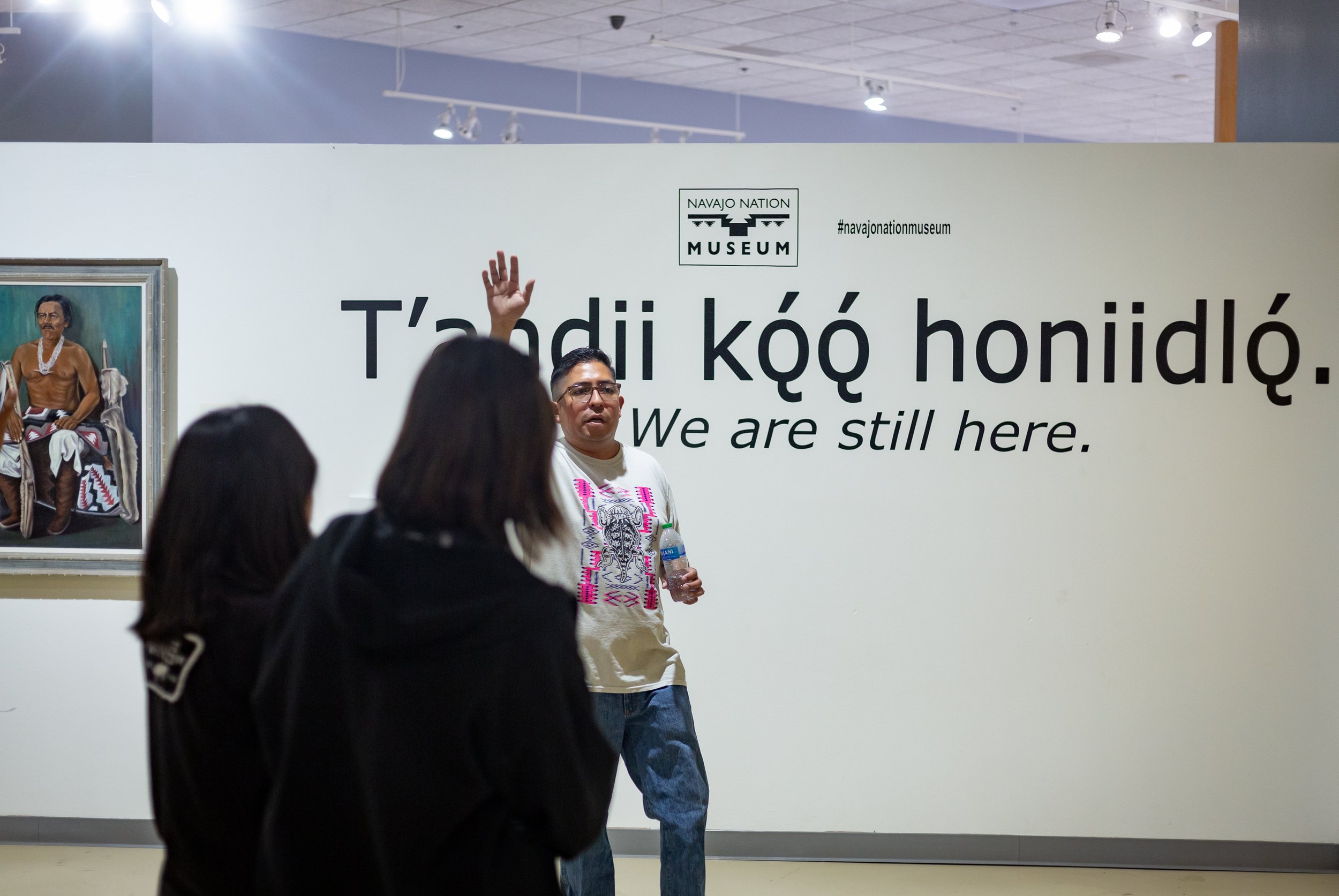
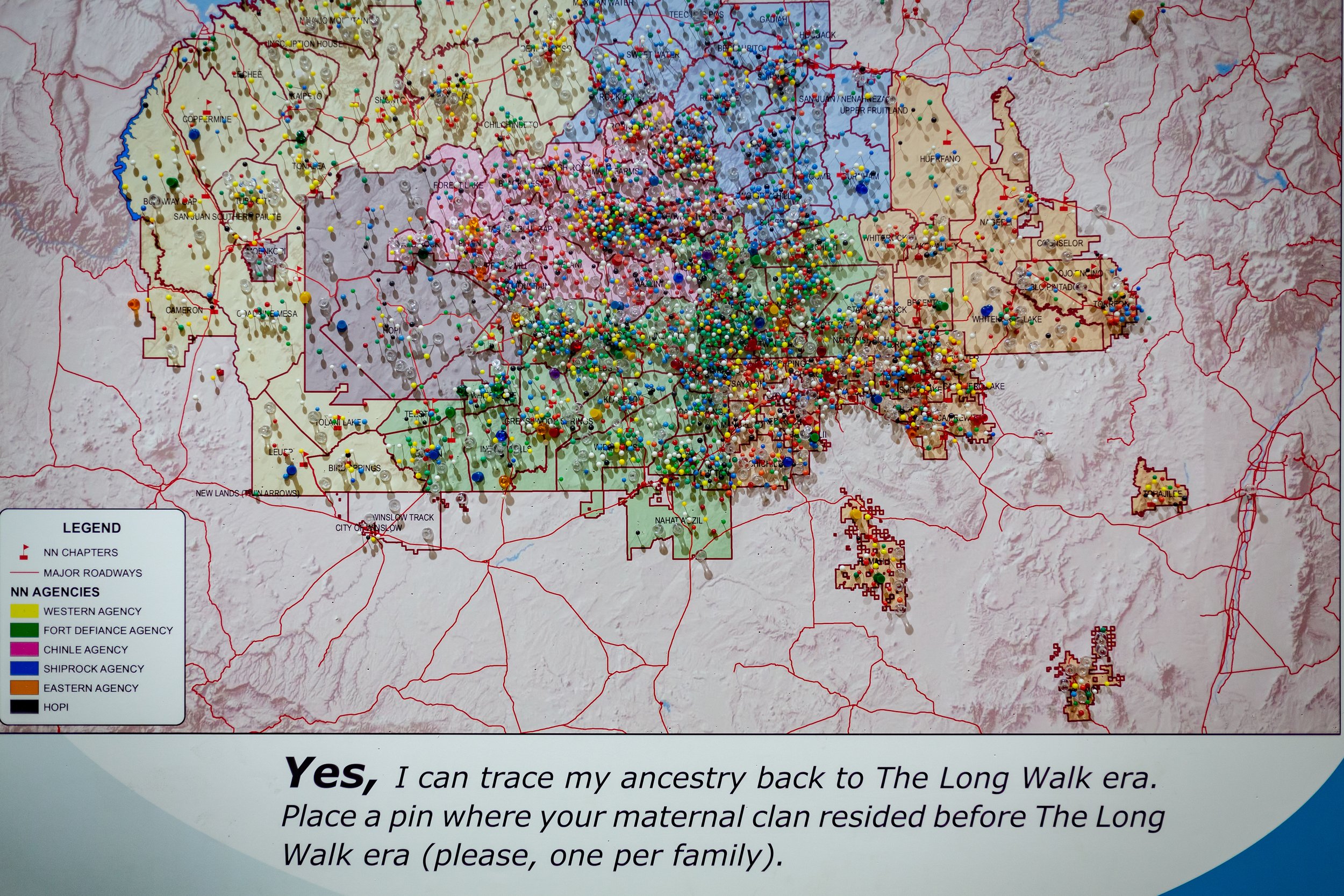
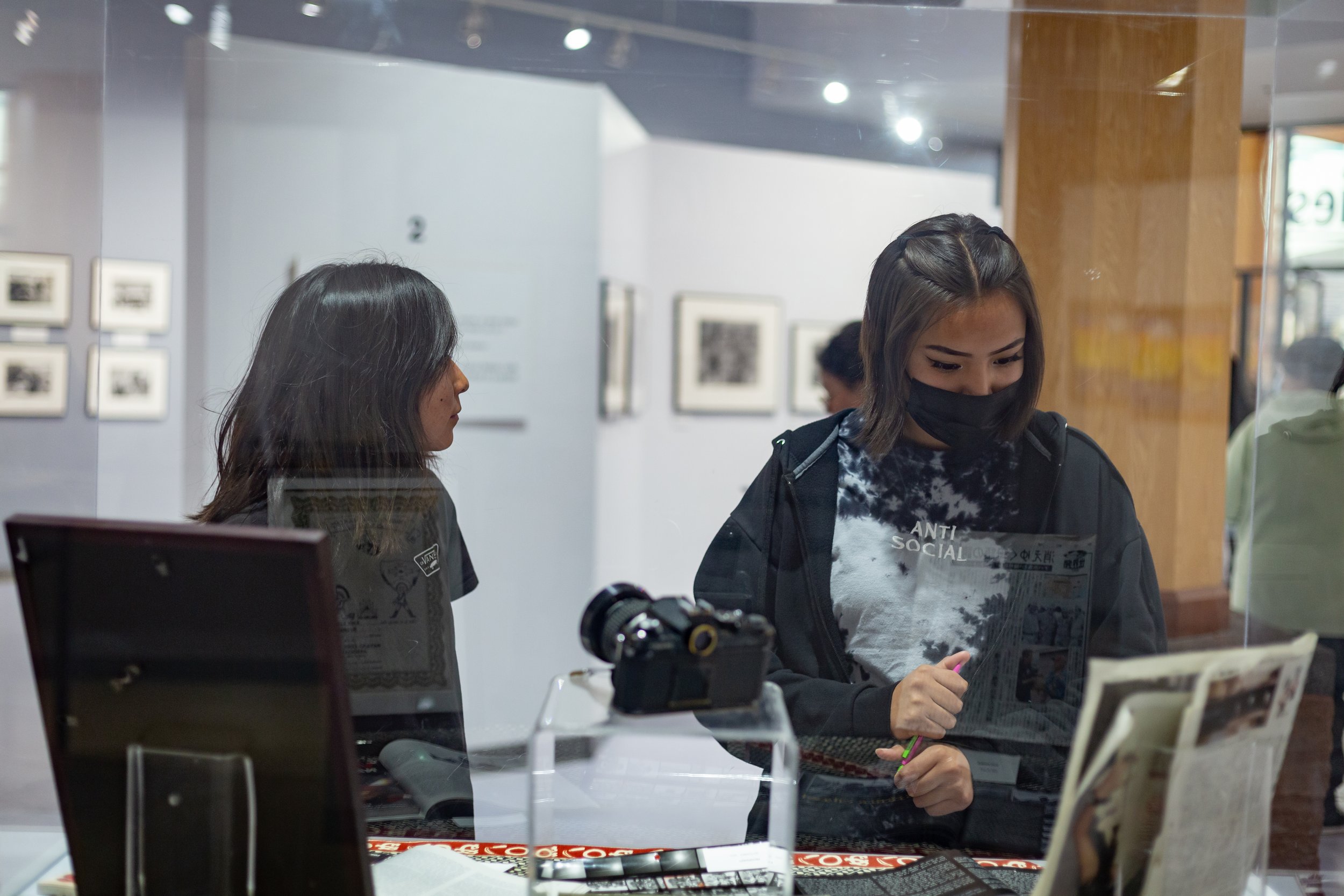
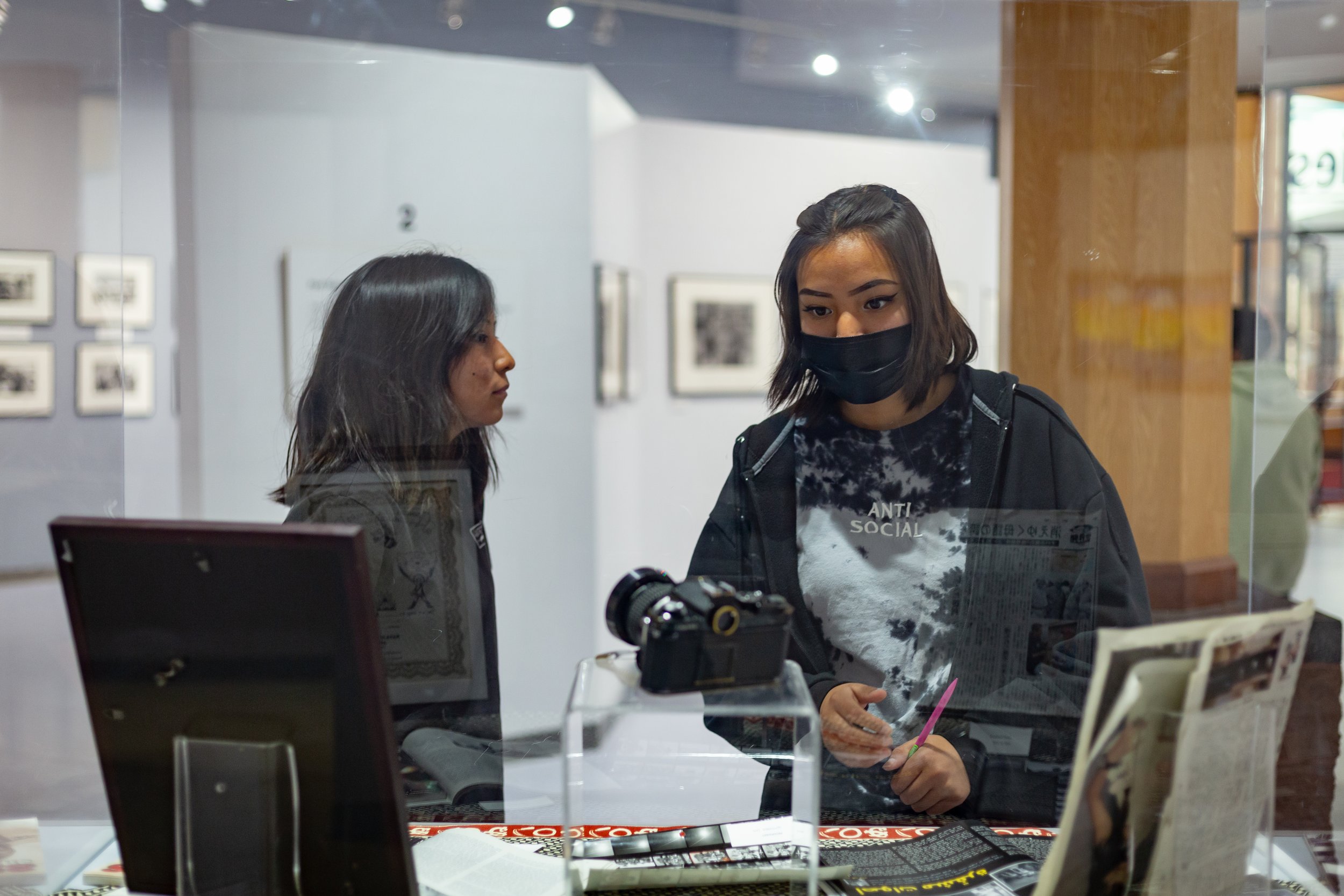
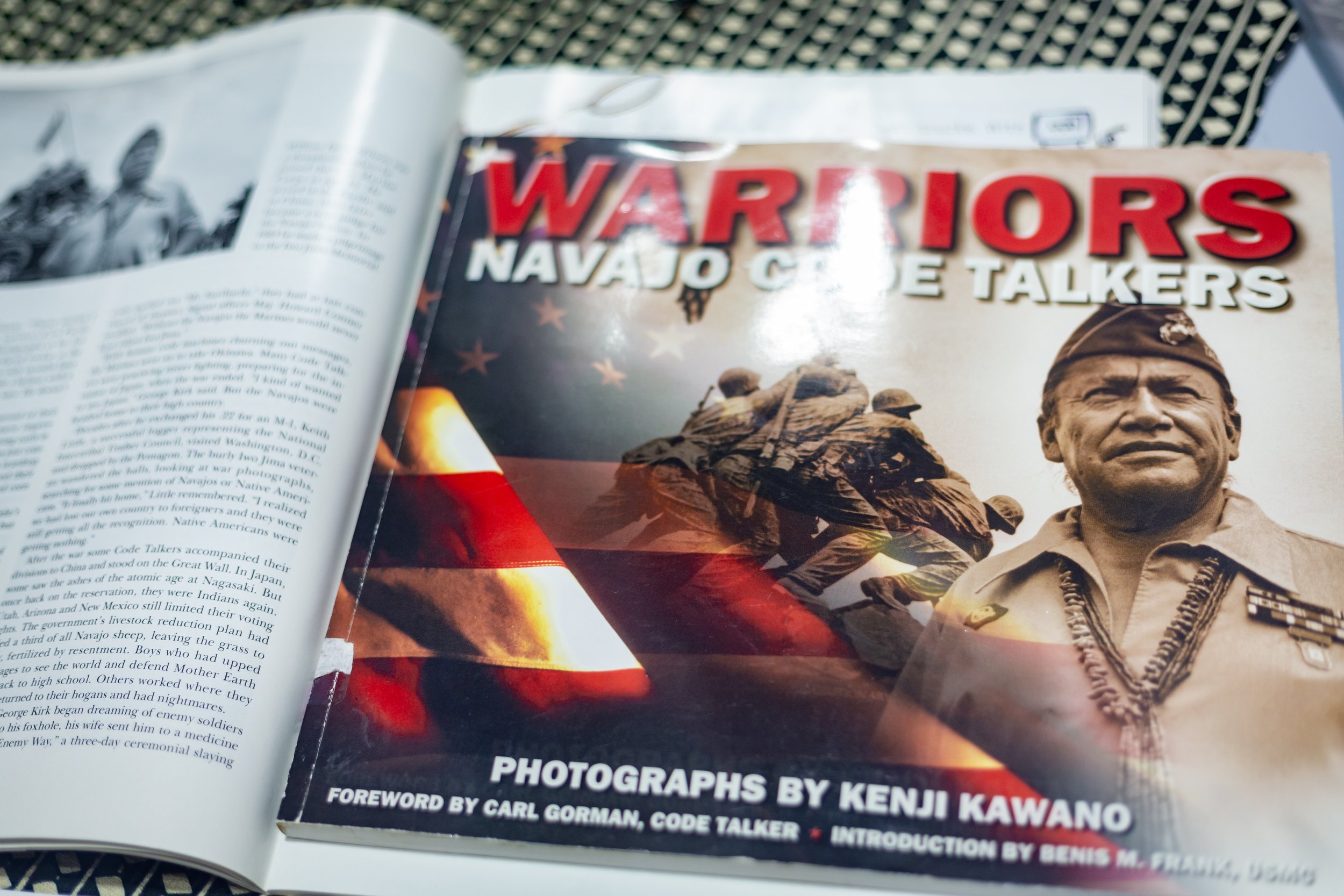
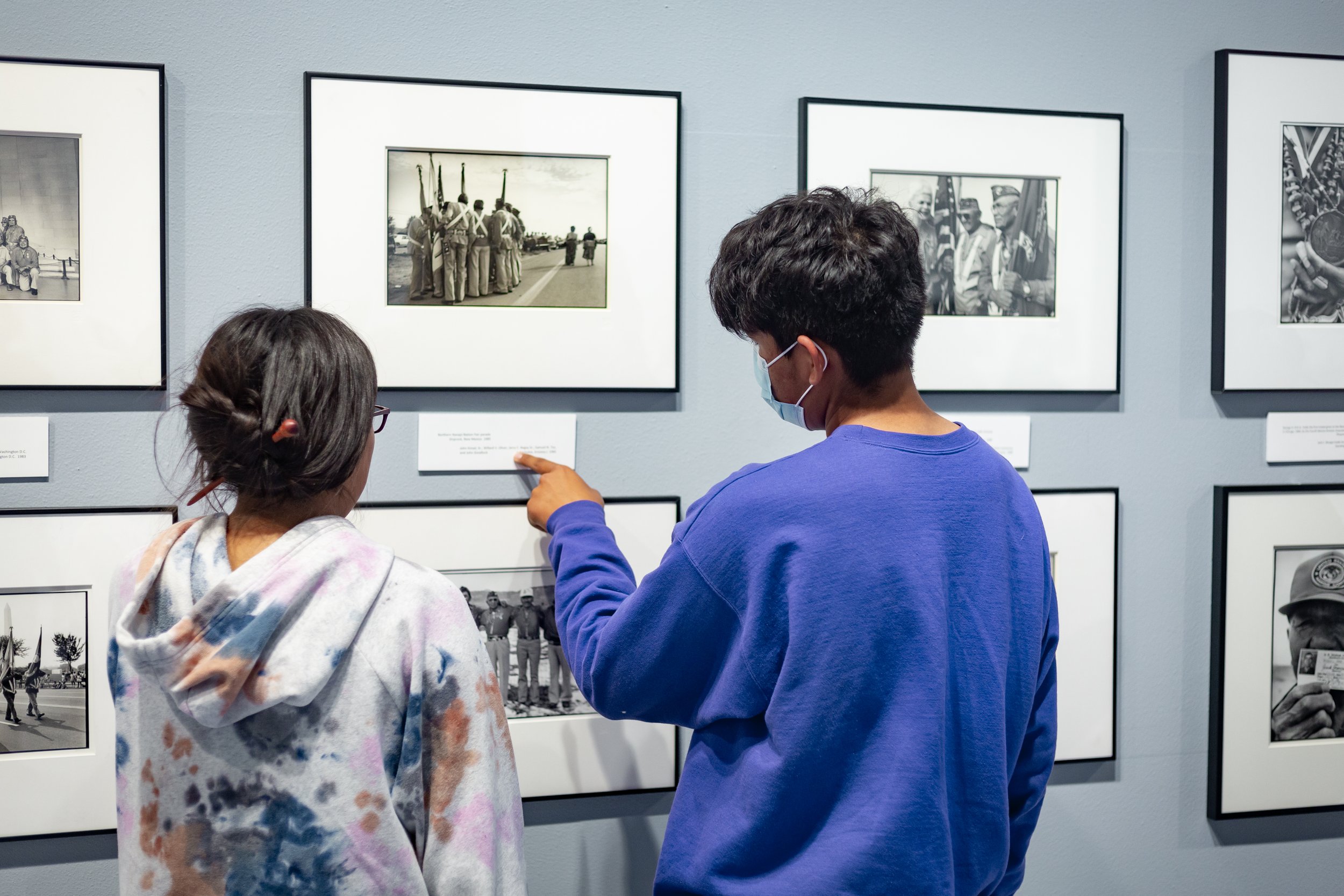
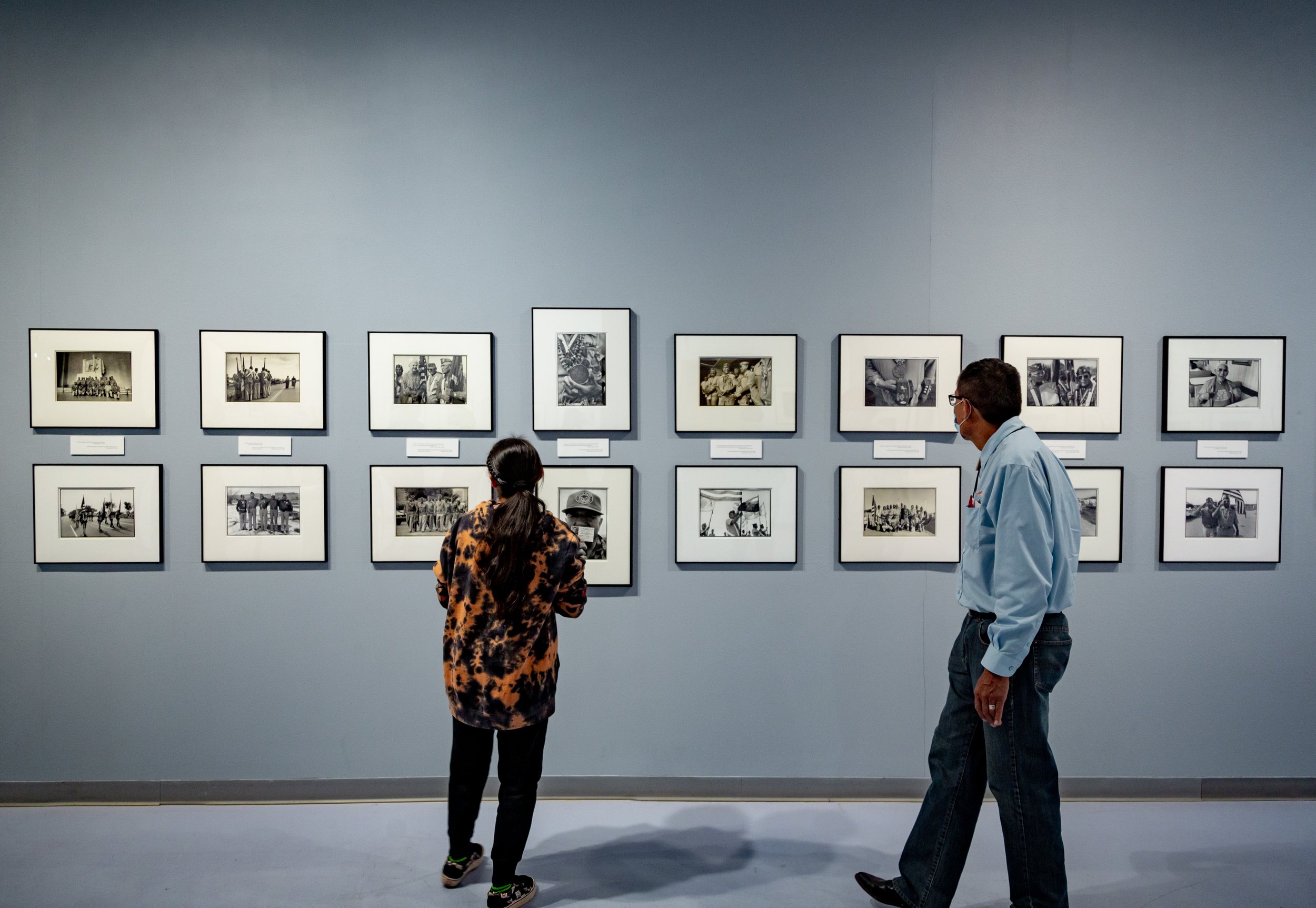
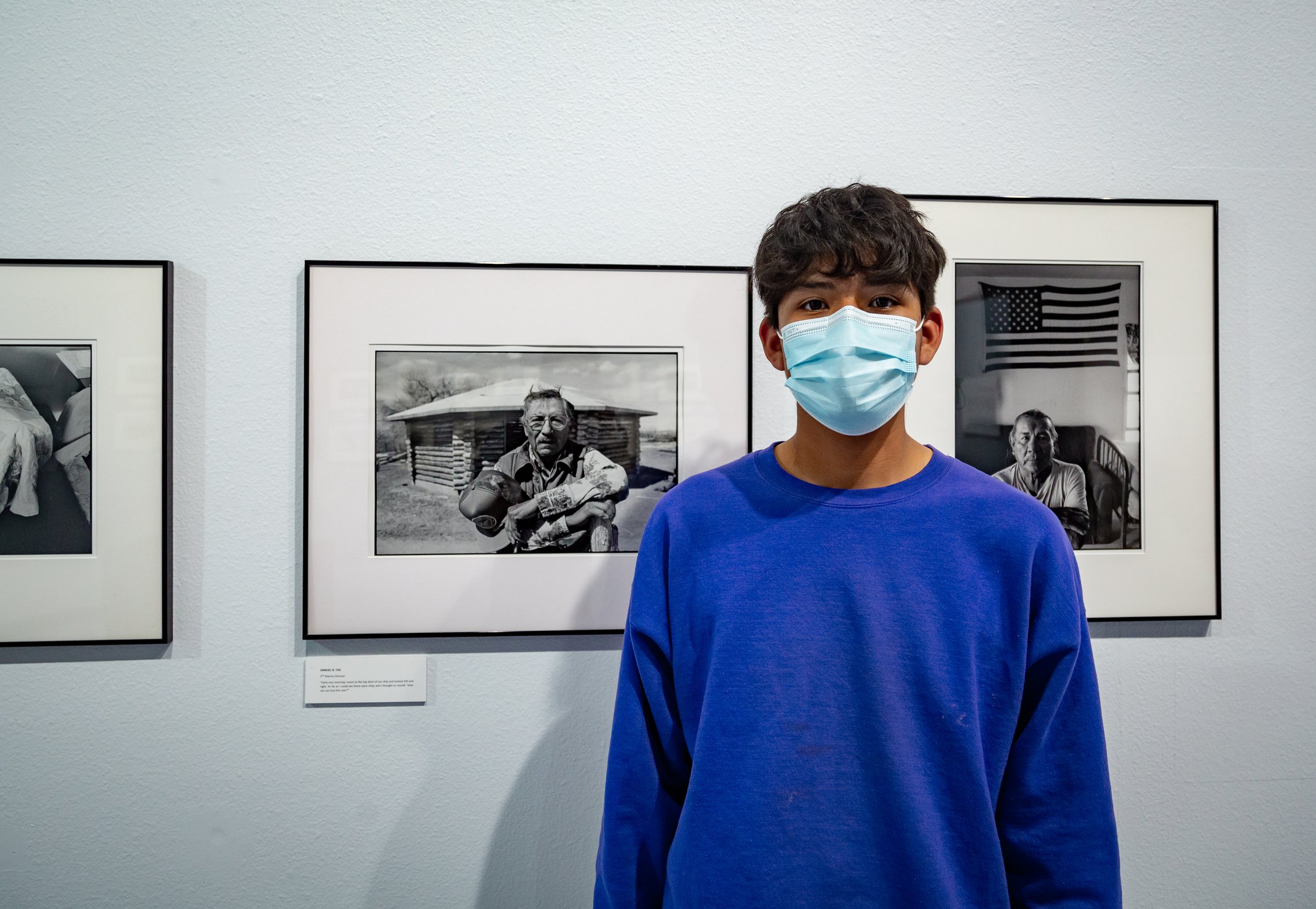
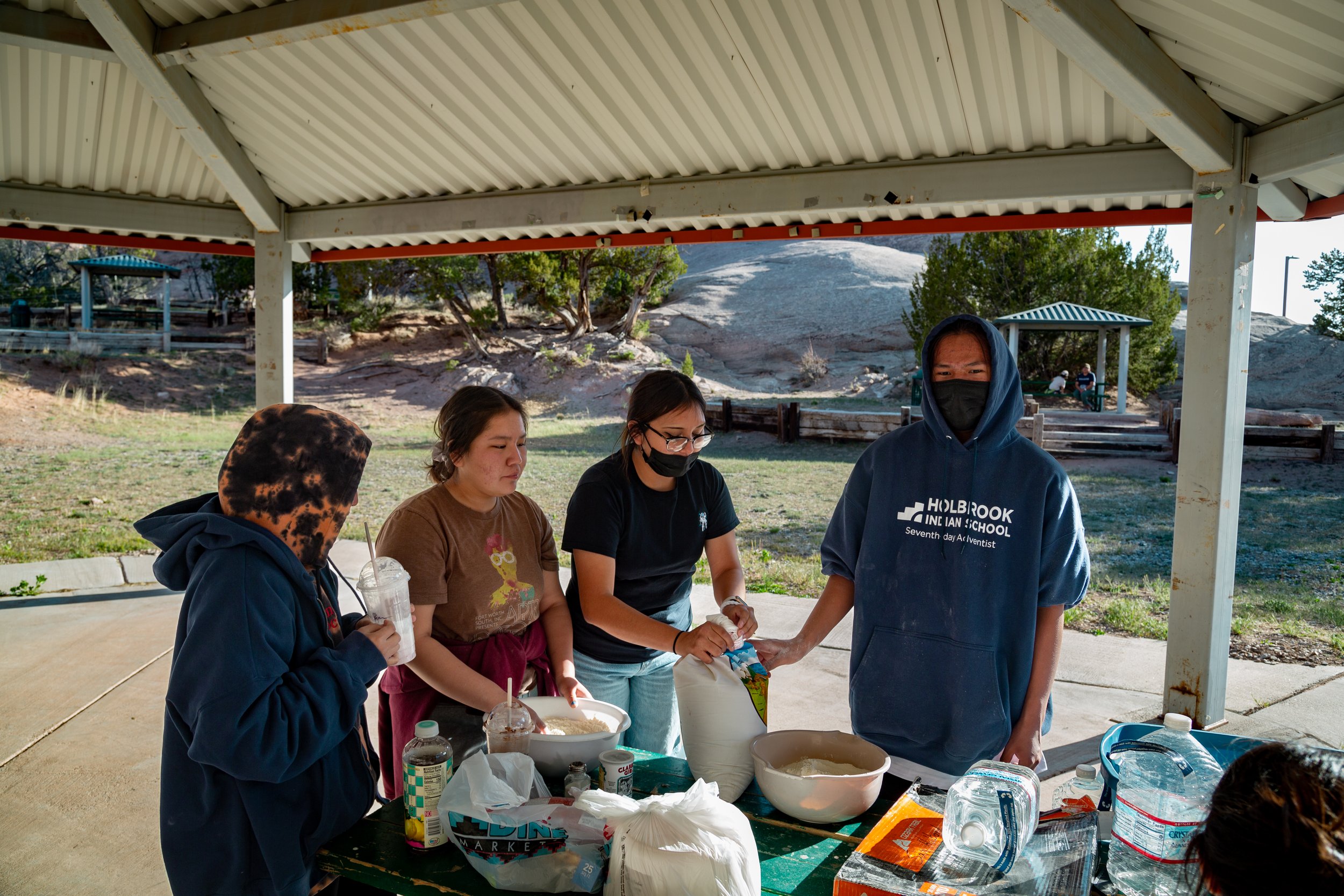
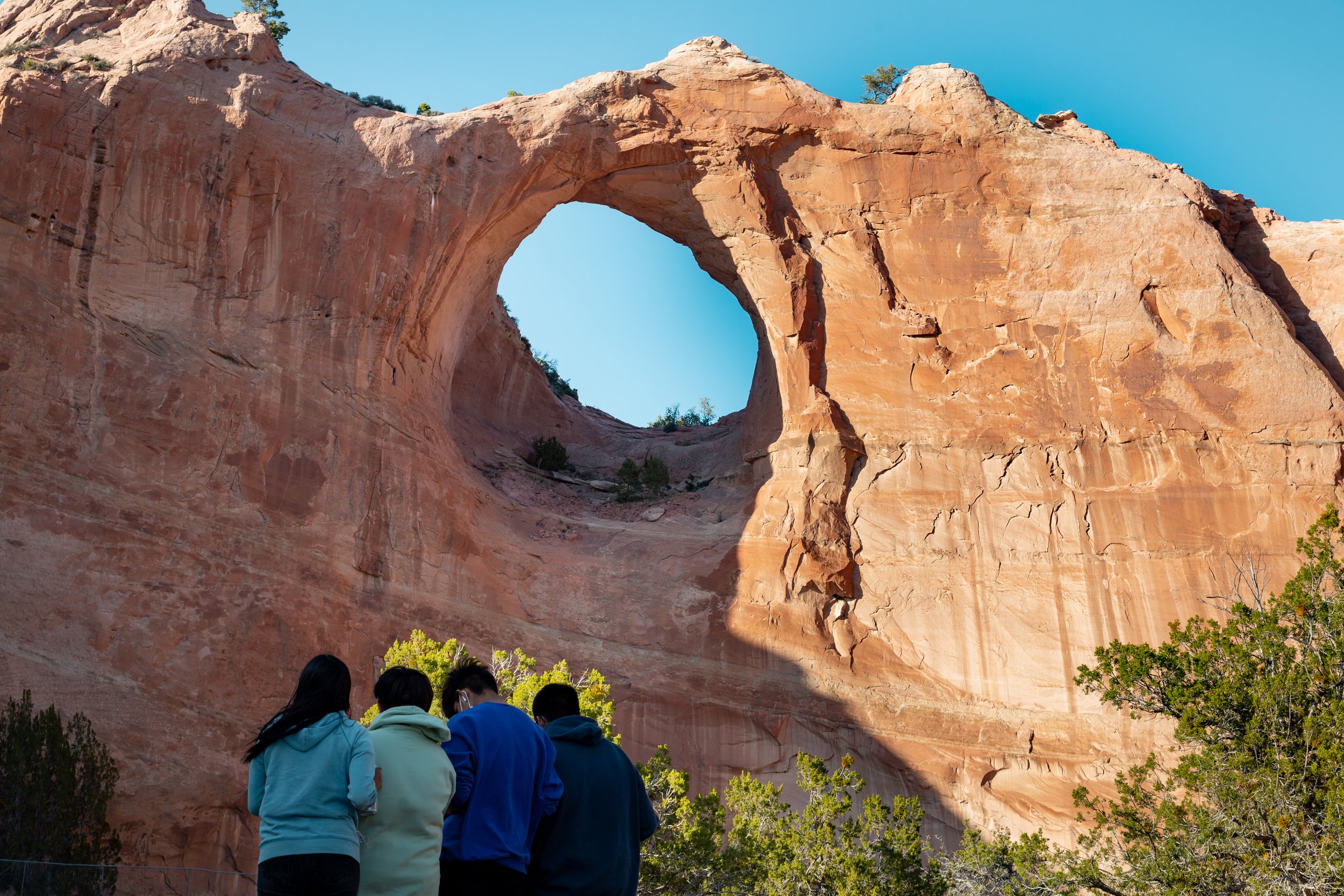
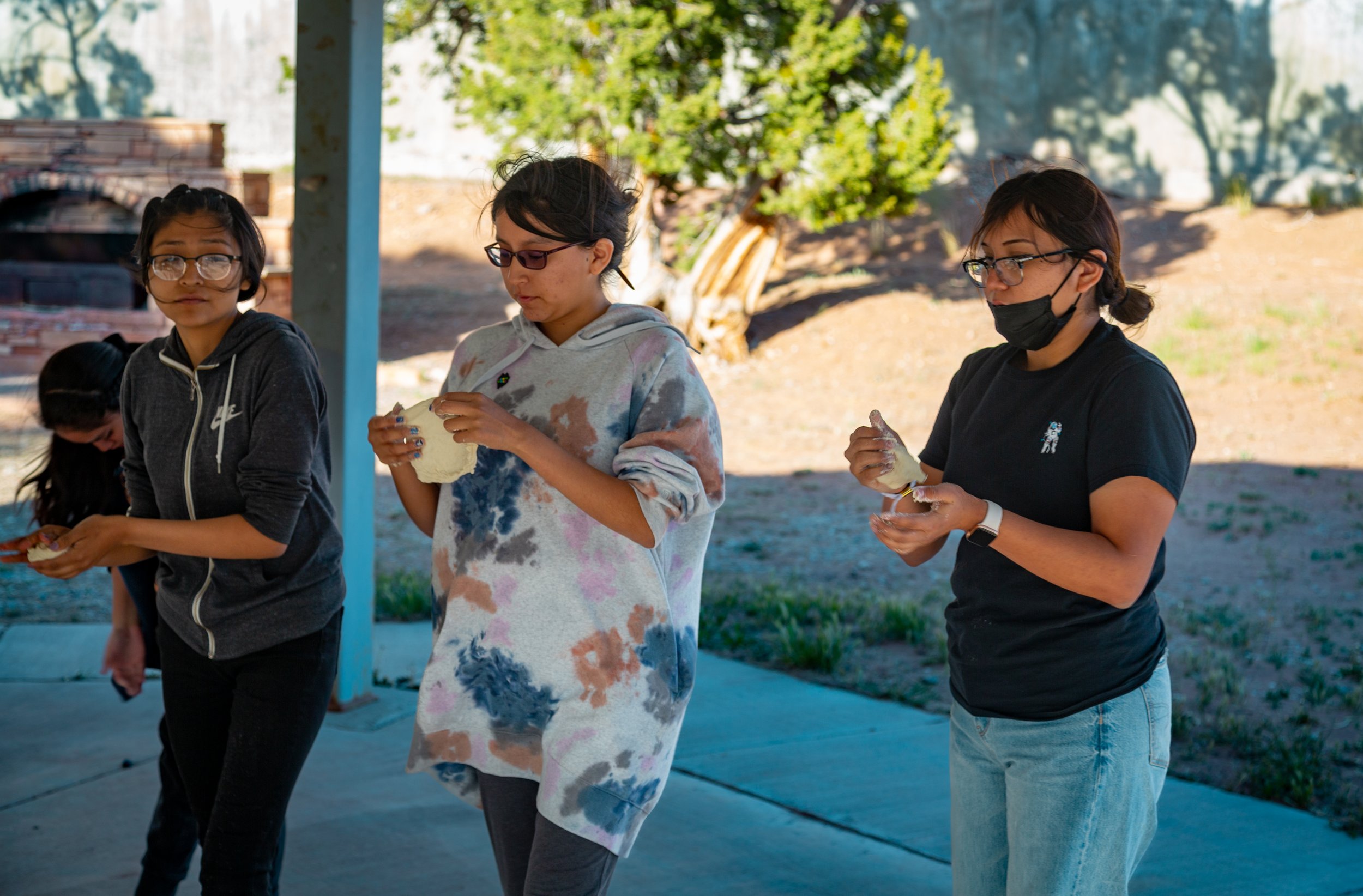
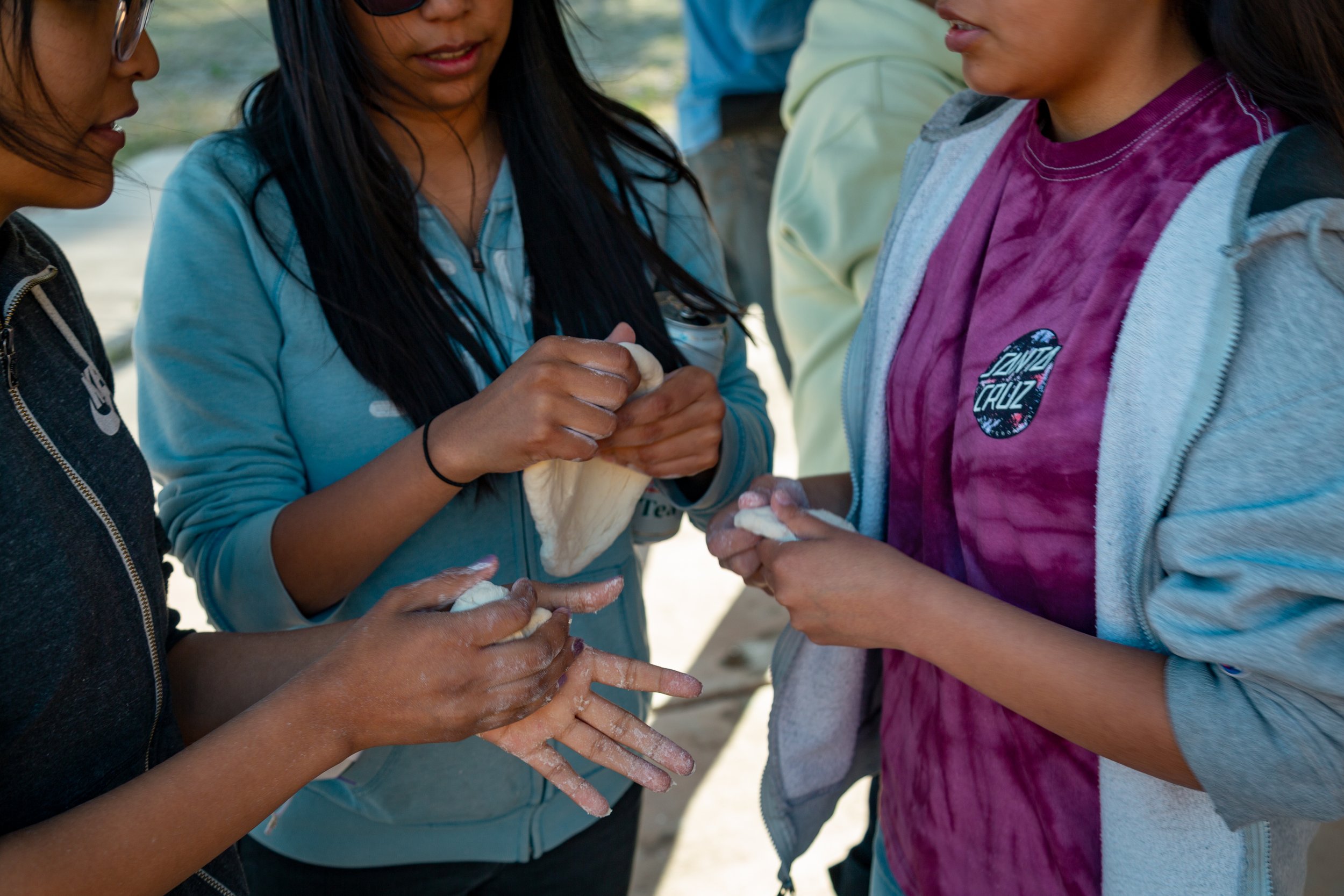
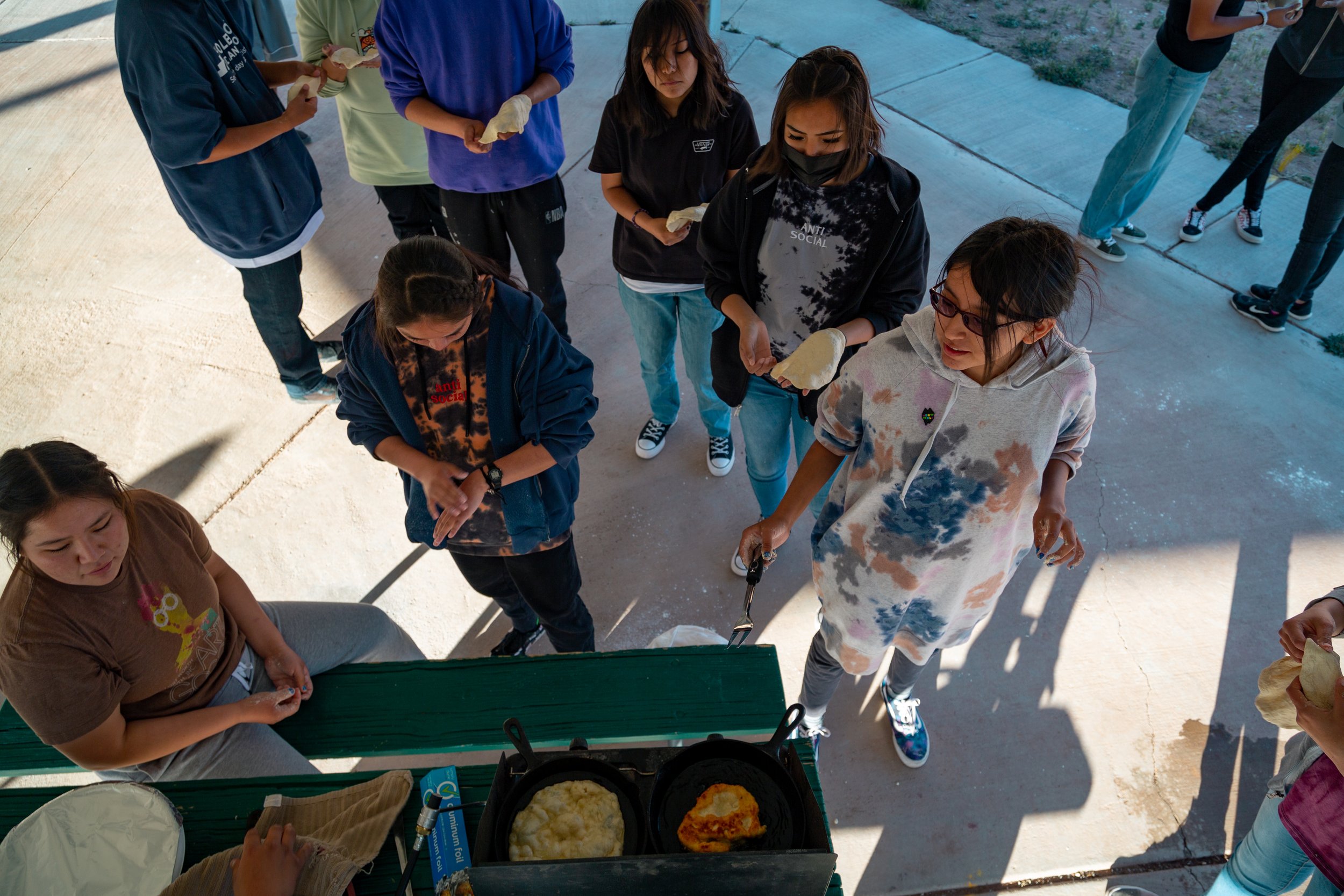
When you give to the Holbrook Indian School, you are not just helping our students to learn. You are helping them gain confidence and discover their potential by providing something many of our students don’t have; a safe haven to live, learn and grow.
You are giving them the opportunity to overcome the trauma and a mistrust of people that may be holding them back.
If you would like to find out more about the needs of the Agriculture Program, or any of our other programs visit our programs page or contact the Development Office at:
(928) 524-6845 ext. 109 or development@hissda.org.
Thank you for your support.


